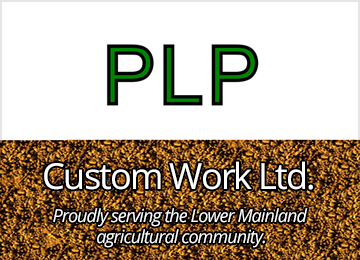Vertical agriculture is often synonymous with hydroponic farming systems, but is not necessarily the same thing—hydroponic systems are growing crops without soil, in an artificial medium, and this can be done within a conventional greenhouse layout. However, more and more hydroponic producers are shifting away from traditional flatbed production systems to vertical structures.
What is vertical agriculture?
The concept of vertical farming was first put forward a decade ago by Dickson Despommier, professor emeritus at Columbia University and the author of a book called The Vertical Farm: Feeding the World in the 21st Century. However in the last 2-3 years there has been increased interest, investment and growth within the sector, with companies such as Aerofarms and FarmedHere becoming significant players in the US market.
Vertical farming produces crops using factory-style stacked rows using artificial lighting, and growth media, meaning there is a more efficient use of space and resources than with traditional greenhouse production.
What are the advantages to vertical farming?
- The ability to produce year round;
- More efficient use of fossil fuel resources;
- Local production of local crops—vertical farmers often make use of old warehouses and factories in urban locations;
- The limited use of land—allows expansion of production, without increased risk of soil degradation;
- Increased yields and faster production cycles;
- Increased potential of automation and use of SMART data and technology;
- Improved biosecurity—crops grown indoors can have fewer pest and disease problems, and often need fewer pesticides.
Vertical farming works best for high-value salad greens and herbs which can be grown in larger quantities than other vegetables that require more space and longer grow cycles. According to David Rosenberg, chief executive and co-founder of AeroFarms:
“On average, we’re growing in 16 days what otherwise takes 30 days in a field—using 95% less water, about 50% less fertilizers, zero pesticides, herbicides, and fungicide.”
Indoor agriculture is not constrained by seasonality, or by location. Production in urban areas to meet local demands is a real possibility. This is also happening as consumers are looking for more and more locally sourced products.
Despite these benefits there are drawbacks to vertical farming:
- It is capital intensive—lighting can account for up to 50% of capital expenditure;
- High production costs;
- High use of energy;
- Limited range of crops.
Given such a rapid growth in the sector, it is also inevitable that it has its critics. Prominent amongst them is Stan Cox, former USDA plant geneticist who has said that:
“The Achilles’ heel of vertical farming or gardening is that it just does not work out energetically.”
Cox points out that, even if energy were to come from renewable sources e.g. solar or wind, and then the electricity was converted back into light for illuminating plants that would have grown much better out in the free sunlight in the first place, this is something only a society wallowing in a huge energy surplus would even consider [1].
New technology is helping to reduce the amount of energy required, and advances in LED technology over the last 5 years has helped to reduce production costs and make vertical farming more viable.
However, for the time being, it is not viable to produce many energy-intensive crops such as grains and potatoes using vertical systems—currently production is limited to salads and greens which only require low levels of light. In common with other sectors of agriculture, another challenge for vertical farming is the availability of labour, to the extent that Matt Matros, the CEO of FarmedHere—one of the largest vertical farming companies in the US—predicts that the sector will go down the same route as Amazon and invest heavily in factory robotics.
Robotics and big data are not the only areas where there has been innovation. Farming underground has also shown to be possible.
A UK company, Growing Underground, is currently producing salads using hydroponics and LED lighting systems in old World War II bomb shelters underneath central London [2]. The business claims to be able to deliver produce to customers within the city within 4 hours of harvesting [3]. Many vertical farming start-ups have been located in urban areas; however, it does not have to be so—vertical agriculture may also offer opportunities for diversification for small-scale farms in rural areas. For example, livestock farms which do not have the soil for extensive field crop production making use of other redundant farm buildings.
Another example of innovation within the sector is Freight Farms, [4] a company which supplies ready-made hydroponic farms within 40 foot shipping containers. The company claims that the systems are capable of growing a range of lettuces, greens and herbs at a commercial scale in any climate. It is also not all about food; the increased levels of biosecurity provided by indoor agriculture would make an ideal system for producing medical crops and plant-based vaccines.
Despite increased costs of production, it is evident that vertical farms are meeting the demand of some consumers for quality salads, produced locally using minimal amounts of chemical inputs—and, as such, are here to stay.
Bibliography
- Cox, “The Vertical Farming Scam,” 11 December 2012. [Online]. Available: https://www.counterpunch.org/2012/12/11/the-vertical-farming-scam/. [Accessed 20 September 2017].
- Bloomberg, “WWII Bomb Shelter Becomes Hi-Tech Salad Farm Deep Under London,” 03 September 2015. [Online]. Available: https://www.bloomberg.com/news/articles/2015-09-03/wwii-bomb-shelter-becomes-hi-tech-salad-farm-deep-under-london.
- The Guardian, “Growing underground: the fresh herbs sprouting beneath Londoners’ feet,” 26 April 2016. [Online]. Available: https://www.theguardian.com/environment/2016/apr/26/growing-underground-the-fresh-herbs-sprouting-beneath-londoners-feet. [Accessed 23 September 2017].
- Freight Farms, “Freight Farms,” 2017. [Online]. Available: https://www.freightfarms.com/home#ready-set-grow. [Accessed 22 September 2017].













